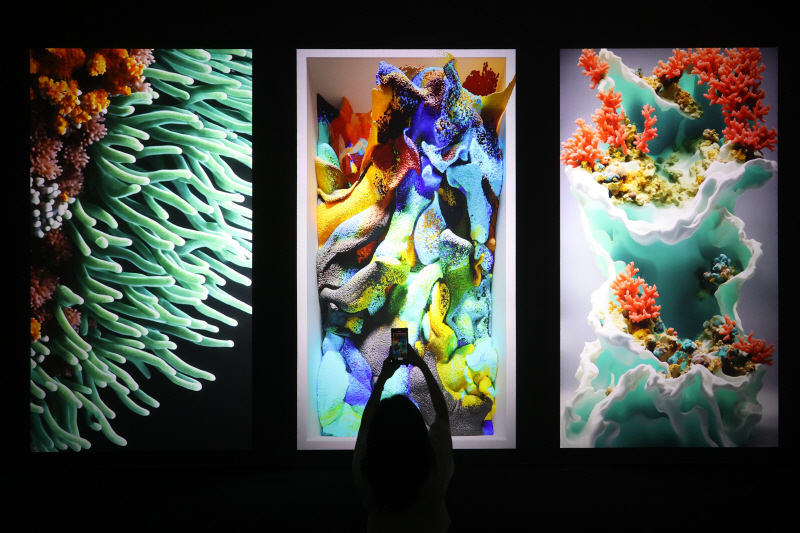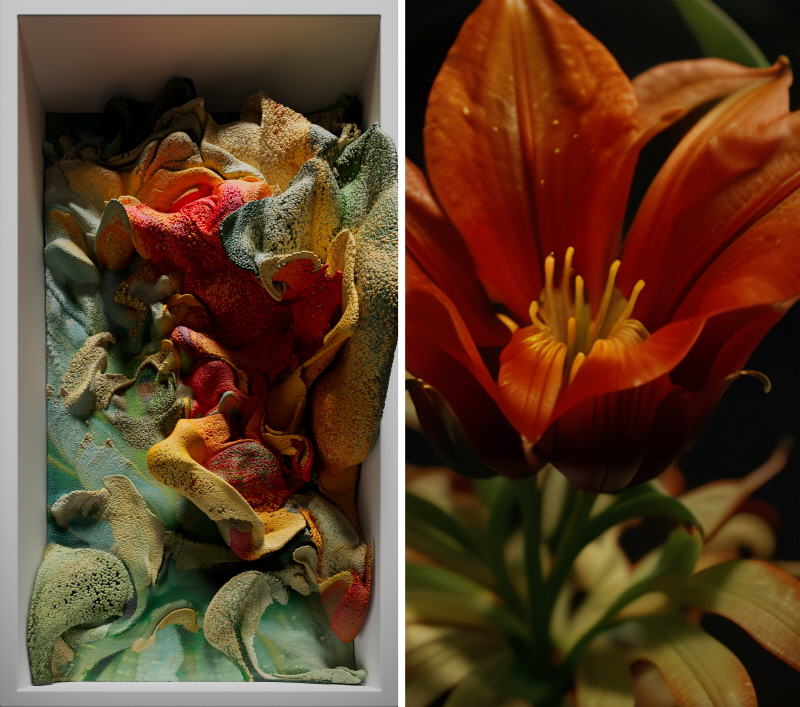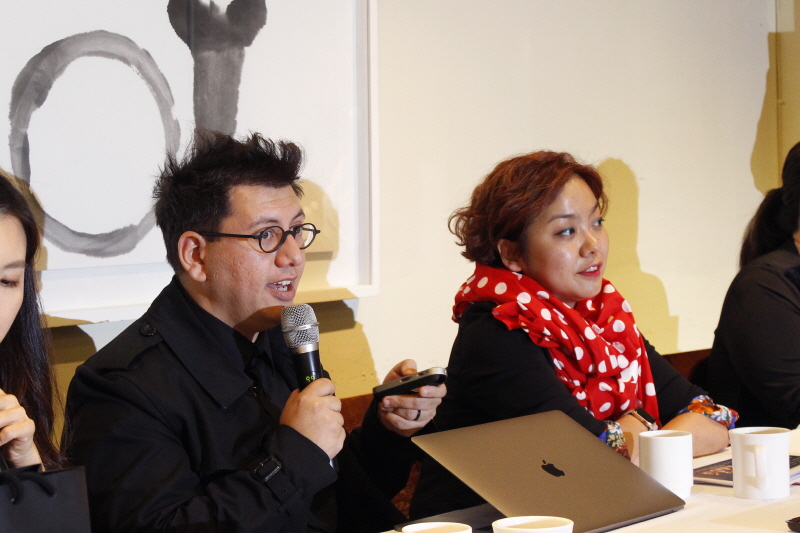In a space with a ceiling height of 10.8 meters (35.4 feet), three large screens on the wall seem to ripple as if color particles might spill out.
On the left and right screens, images of petals, coral, birds, and waterfalls occasionally emerge, contrasting with the abstract display in the center.
What would nature look like if dreamed up by a machine? AI media artist Refik Anadol (39) provides an answer to this question with his latest work, “Machine Hallucination.”

“Today, we will witness the world’s most advanced AI model. It will emit sounds and even scents inspired by images of nature,” Anadol explained as he introduced his first solo exhibition in Asia, “Echoes of Earth: Living Archive, during a meeting at Futura Seoul on Bukchon-ro, Seoul, on August 27.
The screens, covering entire walls, displayed scenes of photo, sound, and 3D scan data collection from rainforests in 16 locations worldwide, including the Amazon, Africa, and Southeast Asia. This was followed by a cascade of 500 million images of nature every 10 minutes across the screens along a long corridor. This visualization is based on the “Large Nature Model (LNM),” an open-source generative AI model developed by Refik Anadol Studio.
Much like the “Large Language Model (LLM),” an AI model that learns from vast amounts of text data to understand and generate human language, the LNM learns from images of nature to create new visual representations. Earlier this year, Anadol introduced this LNM at the Davos Forum.

This exhibition is the Korean version of the show he held at the Serpentine North Gallery in London last March. The London exhibition attracted 70,000 visitors over five weeks.
In the final exhibition room featuring “Machine Hallucination,” Anadol demonstrated a scent reminiscent of a pine forest, explaining, “This is a new addition to this exhibition. The AI model created numerous scents from the molecular data of nature accumulated over the past four years, and as a human, I selected the one most fitting for this exhibition.”
Anadol recalls his earliest memory related to AI being the video of “Blade Runner” that his mother borrowed when he was eight years old. Growing up in Istanbul, Turkey, he said, “I barely understood the movie through my cousin’s explanations. I can never forget the scene where someone tells an android, ‘Your memories actually belong to someone else.’”
After studying visual arts in Istanbul, he moved to Los Angeles at 27, where “Blade Runner” is set. He earned a master’s degree in media arts at UCLA, where he also teaches students.
Last year, his work “Unsupervised,” which is housed at the Museum of Modern Art (MoMA) in New York, garnered significant attention as a milestone for AI art’s entry into major art institutions. The theme of the machine learning video was “What would a machine dream about after seeing the collection of The Museum of Modern Art?”

The work constantly drew crowds of people staring at the screen. However, it was not without controversy. Art critic Jerry Saltz harshly criticized his work saying “Refik Anadol’s mind-numbing multi-million dollar spectacle is a house of cards and hall of mirrors.”
Anadol clapped back, saying “ChatGPT writes better than you.”
When asked about this, Anadol responded, “Nam June Paik’s work also faced harsh criticism at times, but it outlasted those who didn’t understand it. The world evolves with those who pioneer new media beyond clichés.”
Anadol’s work can also be seen in the lobby of the 63 Building in Seoul. Titled “Sense of Culture (Hui No Ae Rak),” it is an AI analysis and reinterpretation of 1.89 million data points from global fireworks festivals and Korean music data.
However, “Unsupervised,” “Sense of Culture,” and “Machine Hallucination” all bear a visual similarity. Regarding this, Anadol said, “If you look at art history, both Monet and Van Gogh had their unique styles. I work with data as an inexhaustible palette.”
Futura Seoul, operated by the synthetic leather manufacturer Baiksan, will open on September 5. Anadol’s exhibition, which serves as the opening exhibition, will run from September 5 to December 8. Admission is 22,000 won (approximately $16.50) for adults.
BY KEUNYOUNG KWON, YOUNGNAM KIM [young@joongang.co.kr]




